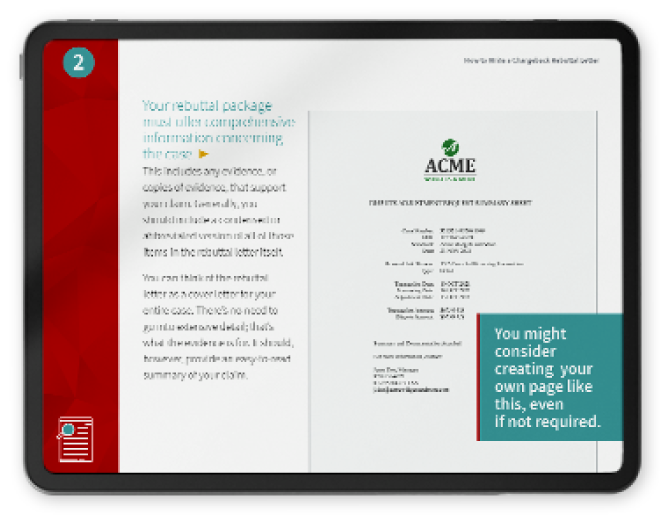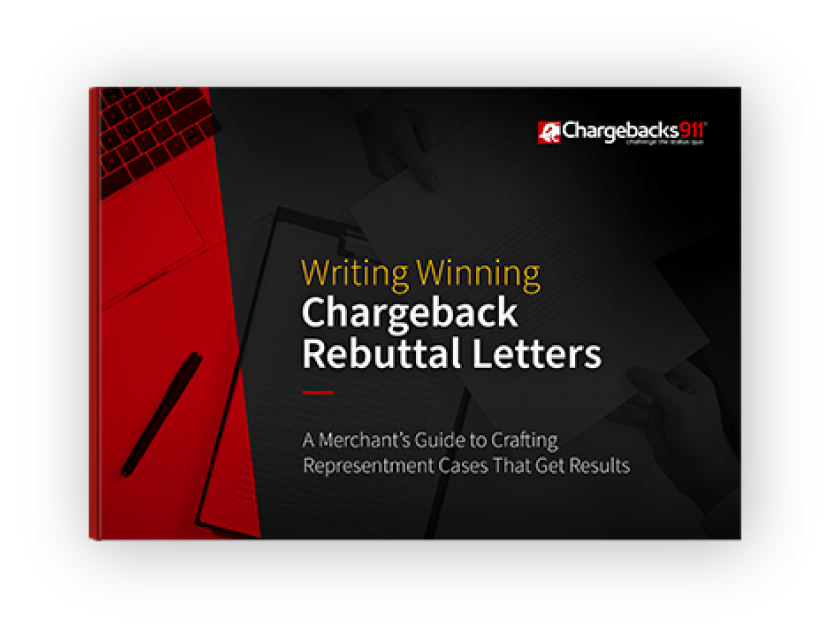What is Chargeback Fraud? Here’s What You Need to Know to Protect Yourself in 2025
Imagine a customer makes a purchase from your online store. You ship the order, you get the money, everything’s good… for a while, at least.
Then, you receive a chargeback out of the blue. Essentially, the customer is saying that you didn’t hold up your end of the deal. That’s not the truth, but you must either prove that the original transaction was legitimate, or simply accept the loss.
This is what’s known as chargeback fraud, and unfortunately, it happens a lot. In this post, we'll be looking at what chargeback fraud is, how it affects your business, and the steps you can take to keep from being a victim.
Recommended reading
- What are Refund Services? Are They Professional Scammers?
- Stop Buyer’s Remorse: Tips to Beat the Second-Glance Blues
- What is Return Fraud? 10 Tips for Merchants to Fight Back
- Post-Holiday Chargebacks Could Undermine 2024 Holiday Sales
- What is First-Party Misuse? Accidental Chargebacks Explained
- Is AI Being Abused to Commit Chargeback Fraud?
What Is Chargeback Fraud?
- Chargeback Fraud
Chargeback fraud occurs when a cardholder seeks a forced bank reversal of a legitimate transaction by deliberately misrepresenting the details of the sale.
[noun]/chahrj • bak • frôd/In short, a chargeback is an attempt to have a payment card charge reversed by the issuing bank. This process was designed to protect consumers against both unfair mechant practices and criminals making unauthorized purchases with stolen credit card data.
With chargeback fraud, however, the cardholder files an unwarranted chargeback. This is considered a form of first-party fraud, because the culprit is the cardholder, not an outside third party.
The term chargeback fraud is often used interchangeably with “friendly fraud” to refer to any cardholder misuse of the chargeback system. That’s not exactly accurate, though. It may seem like splitting hairs, but there is a difference between friendly fraud and deliberate chargeback fraud: intent.
Accidental vs. Deliberate Chargeback Fraud
While both types of chargeback abuse involve misusing the chargeback system, friendly fraud typically refers to cases where the misuse was an honest mistake by the consumer. For example, the cardholder may erroneously believe that chargebacks and refunds are the same thing.
Chargeback fraud, however, usually refers to a malicious act. Chargeback fraudsters are knowingly playing the system to get reimbursed for a purchase and keep the merchandise. They understand what they are doing is wrong, but they do it anyway.
Chargeback fraud could also refer to someone filing a claim because it seems more convenient than asking for a refund. Or, because they believe that it’s a “victimless crime.”
Examples of Unintentional Chargeback Fraud
The cardholder simply did not understand the process.
The cardholder experienced buyer’s remorse; they regret the purchase, but don’t want to contact the merchant.
A family member made the purchase, but the primary cardholder either didn't know or didn’t want to honor the charges.
The cardholder didn’t recognize the charge on their billing statement or forgot about making the purchase.
The cardholder didn’t qualify for a traditional refund (for example, the time limit had passed).
Examples of Deliberate Chargeback Fraud
The cardholder’s original intention was to get something free.
The cardholder failed to return an item, choosing to keep the merchandise and
initiate a dispute instead.
The cardholder initiated a dispute for valid reasons, but then realized the process was simple, and decided to keep the item.
Cardholder didn’t like the goods, but their items were not in any way defective or marketed in a misleading manner.
Cardholder ordered the same item multiple times with the intent to file a chargeback and "warehouse" the stolen goods.
In all of these scenarios, the customer has no valid reason for a chargeback. That means getting the bank to approve the claim will require some amount of dishonesty. For example, they might say that they never received an order, or received items that differed from what they saw on the website.
The bottom line is that, if the cardholder must resort to deception, it’s not an honest mistake: it’s fraud. If the buyer had an issue with a purchase, they should have gone to the merchant first, rather than the bank.
Chargeback fraud and friendly fraud are different things, but from the merchant’s perspective, the result is the same: time and resources lost to invalid chargeback claims.
Is Chargeback Fraud Illegal?
The short answer: kinda.
Although chargebacks protections were mandated by the Fair Credit Billing Act of 1974, the dispute process itself is governed by card networks. There have been cases in which cardholders were charged with wire fraud as a result of chargeback abuse, such cases are exceedingly rare.
Tracking chargeback fraudsters across state lines and bringing criminal charges could require the involvement of card networks, banks, and local and federal law enforcement agencies (like the Federal Bureau of Investigation). Oftentimes, the juice just isn’t worth the squeeze.
Chargeback fraud is mostly a civil matter, but even civil penalties are uncommon. As a merchant, you could sue chargeback fraudsters for damages… but the cost of litigating the matter is usually more hassle than it’s worth. Focusing on preventing chargebacks and blacklisting problematic buyers are probably more reasonable bets.
Who Pays for Chargeback Fraud?
While some costs get passed onto consumers over time in the form of higher prices, merchants largely bear the direct costs of chargeback fraud.
Every chargeback you receive will cost you, both directly and in more subtle ways.
Right up front, you lose the revenue from the original sale, as well as the cost of any merchandise already shipped. But there are other costs that aren’t quite as obvious at first glance. These include:
Even though it’s hard to measure, another long-term cost of chargebacks is the reputational damage to your brand. You could end up looking like a bad risk to banks and processors. At the same time, customers who have gotten away with chargeback fraud may start telling their friends that you’re an easy mark. Either way, you lose.
What Types Of Businesses Are Most Vulnerable to Chargeback Fraud?
Any merchant that accepts credit card payments is open to multiple types of card fraud, including chargeback fraud. That said, some industries and business types are more at-risk than others. Verticals and sales models that are most susceptible to chargeback fraud include:
Why is Chargeback Fraud Hard to Identify?
A growing body of statistics back up the idea that chargeback fraud is a problem. So why isn't something being done to stop this epidemic? There are five key reasons why buyers continue to get away with fraudulent chargebacks:
Why is Chargeback Fraud Becoming More Common?
Zero-fraud liability guarantees that overwhelmingly favor cardholders, the increasing popularity of eCommerce, and new services that make the checkout process more seamless are among the main reasons why chargeback fraud is increasing.
Chargeback fraud is on the rise because it’s easier than ever for consumers to file baseless disputes.
“Zero-fraud liability” guarantees offered by issuing banks are one culprit. Although these programs are meant to protect cardholders from unauthorized transactions, their generous provisions inadvertently encourage dishonest buyers to abuse the system.
The rise of eCommerce is also partly responsible. Online purchases involve card-not-present transactions, which are inherently less secure and more fraud-prone than their card-present counterparts. This is because neither the cardholder nor their payment method are physically at the point of sale.
Then, there are new technologies to consider. Voice-activated shopping (or voice commerce), one-click checkout, or autofilled payment details are also partly to blame. While these services reduce checkout friction, they also make cardholders more susceptible to impulse buys that they later regret. These technologies come with security risks, too. Voice commerce, for example, is particularly vulnerable to scammers who carry out AI voice cloning attacks.
How to Prevent Chargeback Fraud
Chargeback fraud will always be a risk, as long as the chargeback process exists. The good news is that there are a number of tactics merchants can use to protect themselves, though.
You can avoid many of these chargebacks with simple adjustments to policy and procedures. We recommend that you:
Get Help in the Fight Against Chargeback Fraud
While all this can help, preventing chargeback fraud really requires a two-fold strategy. You must prevent chargebacks whenever possible, and fight back in other cases whenever appropriate.
Effective chargeback management can help businesses dispute fraudulent chargebacks and recover lost revenue. Merchants should track chargeback data, analyze the reasons for chargebacks, and represent those that are fraudulent or unwarranted.
Chargebacks911® can help you develop and implement a comprehensive fraud prevention strategy. With over a decade of success in the chargebacks and payments space, we’re uniquely placed to help you manage chargeback fraud and eliminate long-term risk. Contact us to learn how much you could be saving today.
FAQs
How do you fight chargeback fraud?
Like any other illegitimate chargeback, claims stemming from chargeback fraud can be challenged through the representment process. Due to the time and effort involved — as well as the statistically low chances of success — preventing the chargebacks from happening is almost always the better option.
Who pays for chargeback fraud?
The merchant is held liable for the acceptance of any fraudulent order and the cardholder's issuing bank will collect the customer's refund from the merchant should a cardholder request a chargeback.
What is the cause of chargeback fraud?
Chargeback fraud comes from cardholders who fraudulently attempt to obtain an unwarranted, bank-forced refund while at the same time retaining the purchased items.
What is the chargeback rate for fraud?
The financial services industry faces an average chargeback rate of 0.55%, primarily driven by fraudulent activities, unauthorized transactions, or disputes related to billing errors.
What is an example of chargeback fraud?
A consumer makes an online purchase, then calls the bank and claims the item was never delivered. The goal is to get the bank to force a full refund for the transaction, while the fraudster enjoys full use of the undamaged merchandise.
Can a chargeback be fraud?
Yes. Chargebacks filed due to buyer’s remorse or by cardholders interested in free products or a “double refund” are fraudulent. Disputes initiated by second-party fraudsters, like “refund service” scammers, are also illegitimate.
How to prove chargeback fraud?
Merchants who keep purchase orders, invoices, receipts, proofs of delivery, and emails between the merchant and cardholder on file are more likely to have compelling evidence that demonstrates the seller is not at fault and that the cardholder filed a fraudulent chargeback.
Do banks really investigate chargebacks?
Yes. Banks hire in-house fraud analysts to look into fraudulent activity, unusual behavior, and contested charges. Fraud teams examine transactions flagged by fraud detection software, investigate chargebacks filed by cardholders and, in severe cases, may work with law enforcement or government agencies to identify and catch bad actors.















